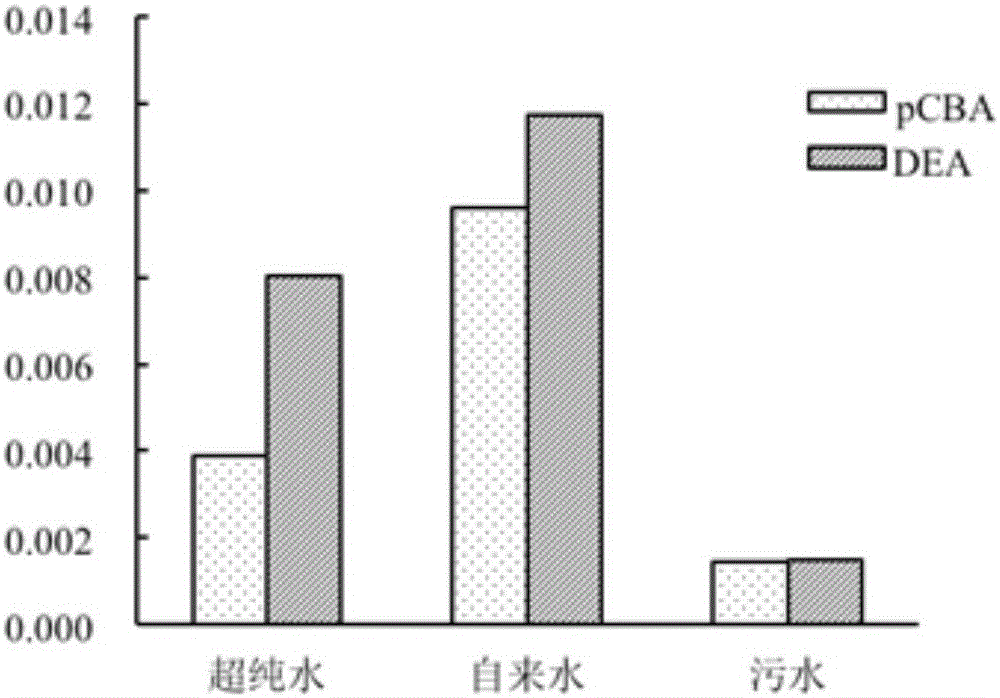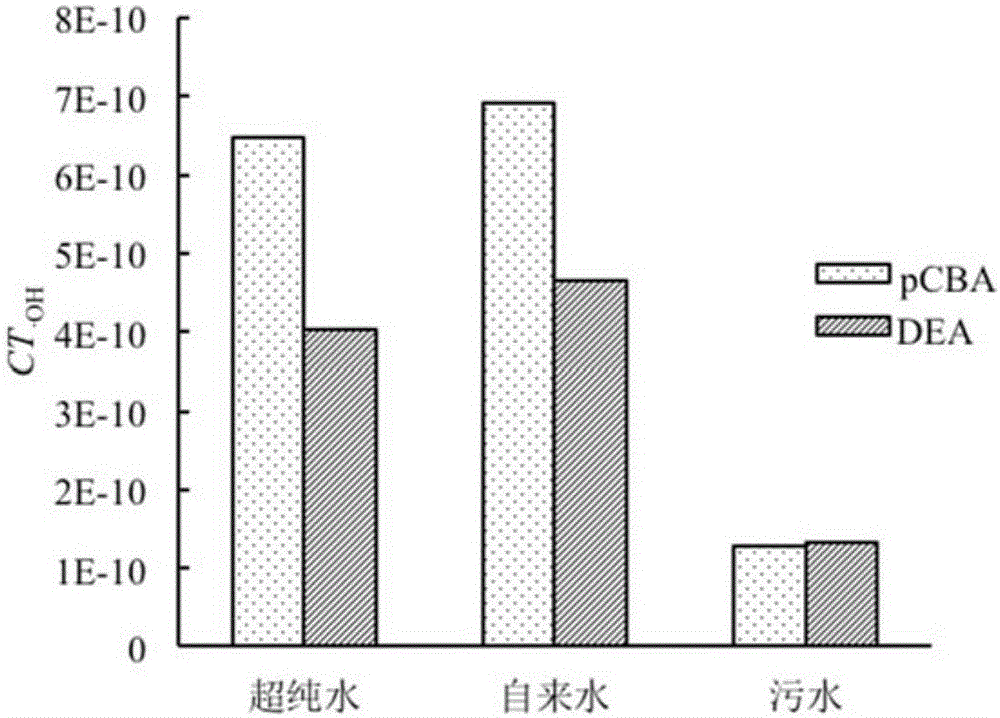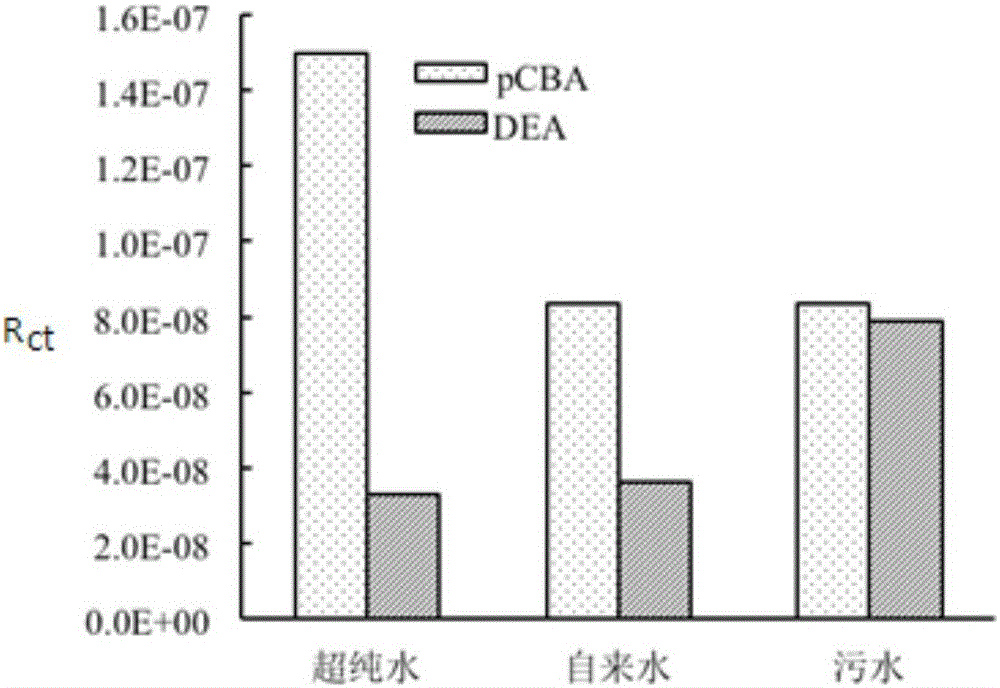Method for determining hydroxyl free radicals of ozone system
A technology of free radicals and ozone, applied in the field of water treatment, can solve problems affecting the accuracy of measuring hydroxyl radicals and achieve accurate measurement results
- Summary
- Abstract
- Description
- Claims
- Application Information
AI Technical Summary
Problems solved by technology
Method used
Image
Examples
Embodiment 1
[0045] Experimental group: Add DEA=1μmol / L, H 2 o 2 =10μmol / L, ozone=20μmol / L, pH=7, T=20±1℃
[0046] Control group: Add pCBA=1μmol / L, H 2 o 2=10 μmol / L, ozone=20 μmol / L, pH=7, T=20±1°C.
[0047] For the CT obtained by using two indicators pCBA and DEA O3 , CT ·OH and R ct value for comparison.
[0048] Under three water quality conditions, the CT of pCBA and DEA O3 worth seeing figure 1 . like figure 1 As shown, in ultrapure water, the CT of pCBA O3 The value is 48% of DEA; in tap water, the CT of pCBA O3 Value is 81% of DEA; CT of both in sewage O3 basically the same. Because the hydroxyl radical capture ability of sewage is strong, the influence of hydroxyl radical chain reaction brought by pCBA on ozone decay is weakened, so the CT obtained by pCBA and DEA in sewage O3 The values are basically the same. This shows that in the water quality with weak ability to capture hydroxyl radicals, the CT obtained by using pCBA as an indicator O3 The value is smalle...
PUM
 Login to View More
Login to View More Abstract
Description
Claims
Application Information
 Login to View More
Login to View More - R&D
- Intellectual Property
- Life Sciences
- Materials
- Tech Scout
- Unparalleled Data Quality
- Higher Quality Content
- 60% Fewer Hallucinations
Browse by: Latest US Patents, China's latest patents, Technical Efficacy Thesaurus, Application Domain, Technology Topic, Popular Technical Reports.
© 2025 PatSnap. All rights reserved.Legal|Privacy policy|Modern Slavery Act Transparency Statement|Sitemap|About US| Contact US: help@patsnap.com



